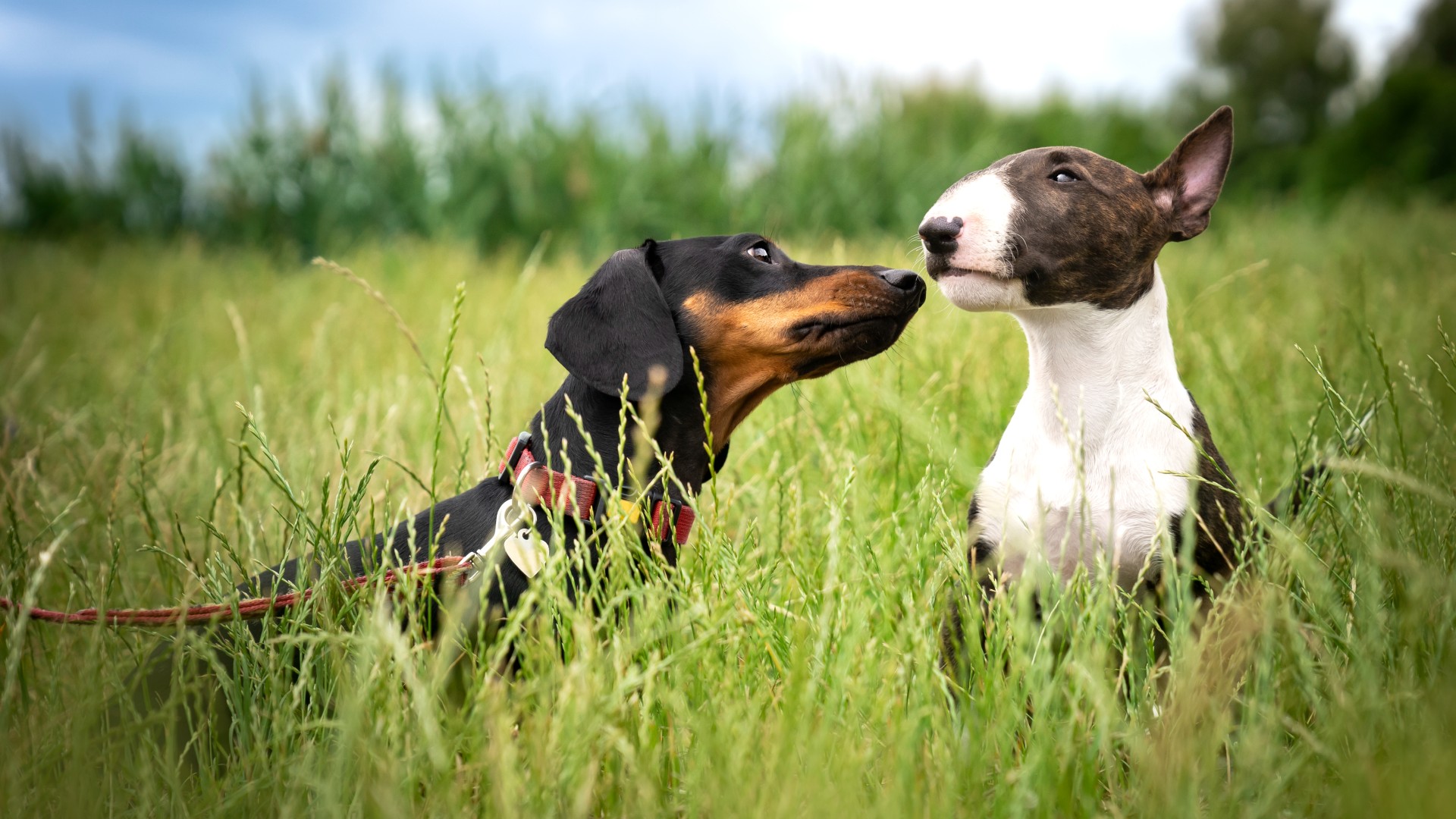One common mistake dog owners make when socializing their adolescent pup, and what to do instead
Strike a balance between letting your dog greet other dogs and allowing them to hang back and observe

If you're anything like most pet parents, you may worry that if your puppy isn't well socialized within the first few months of their life, that there's no chance of helping them learn how to behave well when they get a bit older.
But before you resign yourself to a life spent reading up on how to deal with a badly behaved dog, we have good news — socialization doesn't stop when your puppy reaches adolescence.
In fact, according to expert trainer Amelia Steele, you'll want to keep the best dog treats front and center as your canine companion becomes a teenager because socializing them during this stage of their life is super important.
"As your dog progresses through their adolescent or “teenage” phase, it’s really important to continue socializing them in the right way," says Steele, adding, "emphasis on the right way!"
So, what exactly does the 'right way' look like? Read on to find out!
A post shared by Amelia Steele (@ameliathedogtrainer)
A photo posted by on
Steele says there's a common mistake we often make when it comes to socializing our dog's that can end up creating problems, rather than alleviating them.
"So many people think socialization means letting their dog meet or play with loads of other dogs, but taking that approach can actually lead to more long term issues including reactivity (barking or lunging at other dogs)," Steele explains.
Get the best advice, tips and top tech for your beloved Pets
To socialize your adolescent dog correctly, it's important to strike a balance between letting them greet other dogs and letting them observe other pups in their environment without any interaction occurring.
"A really good exercise is to hang back and simply reward your dog for watching other dogs calmly," says Steele.
While puppyhood is important, the adolescent stage is just as key when it comes to helping your dog learn new skills and behaviors and being proactive with your training during this time can prevent issues from developing down the line.
"If your dog is between six months and two years old, you actually have an amazing opportunity to set your dog up to be successful for the rest of their life," Steele explains.
Training any new skill or behavior, takes time, patience and consistency — and socializing your dog is no exception!
If you'd like some useful tips to help you with training in other areas, check out our guides to the most common loose leash walking mistakes (and how to avoid them) and how to stop a dog from jumping up.

Kathryn is a freelance writer who has been a member of the PetsRadar family since it launched in 2020. Highly experienced in her field, she's driven by a desire to provide pet parents with accurate, timely, and informative content that enables them to provide their fur friends with everything they need to thrive.
Kathryn works closely with vets and trainers to ensure all articles offer the most up-to-date information across a range of pet-related fields, from insights into health and behavior issues to tips on products and training.
When she’s not busy crafting the perfect sentence for her features, buying guides and news pieces, she can be found hanging out with her family (which includes one super sassy cat and a kitten), drinking copious amounts of Jasmine tea and reading all the books.
She has written for a range of publications, including Fit&Well, Top Ten Reviews, LiveScience, Goodto, and Product Hunt.
